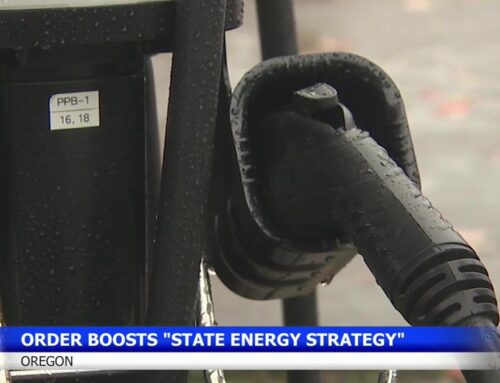Egyptian Researchers Unleash Quantum Ninjas to Improve Renewable Energy Forecasts
April 29, 2025
Insider Brief
- A quantum-inspired AI system developed by Egyptian researchers significantly improved renewable energy forecasting accuracy, potentially easing the integration of solar and wind power into electric grids.
- The model combines a Quantum Temporal Model with the Ninja Optimization Algorithm to overcome forecasting challenges like data variability and feature selection.
- In testing, it outperformed traditional deep learning models and optimization techniques, achieving a 95.15% accuracy rate and a near-zero error margin when predicting energy output.
A quantum-based deep learning model combined with a novel optimization technique has significantly boosted the accuracy of renewable energy forecasting, offering potential improvements in the integration of solar and wind power into electric grids, according to a new study published in Scientific Reports.
Researchers from Mansoura University and Delta Higher Institute of Engineering and Technology developed a system pairing a Quantum Temporal Model (QTM) with a Ninja Optimization Algorithm (NiOA) — designed to cut through complexity — to tackle one of renewable energy’s biggest technical challenges: its intermittency and unpredictability.
Experimental results showed that the system predicted wind and solar energy output with remarkable precision, correctly capturing over 95% of real-world patterns and showing almost no error in its forecasts. For our technical readers, it achieved an R² of 95.15% and an exceptionally low root-mean-square error (RMSE) of 0.00003 when forecasting wind and solar production.
Quantum Models Outperform Traditional Deep Learning
The study compared QTM+NiOA’s performance against traditional deep learning approaches like Recurrent Neural Networks (RNN), Long Short-Term Memory networks (LSTM), Convolutional Neural Networks (CNN), and Hybrid Encoder-Decoder Attention Models (HEDAMs). While standard deep learning methods struggled with either long-term trends or computational load, the quantum-inspired model demonstrated higher stability and accuracy across time series data, handling both short-term fluctuations and long-term patterns effectively.
The researchers used a French grid dataset containing hourly solar and wind production records since 2020. Data preparation steps included normalization, missing data handling and feature extraction. Feature selection was then optimized using the Ninja algorithm, which the authors modeled on the agility and adaptability of a “ninja” to balance exploration and exploitation in the solution space.
When benchmarked against nine other optimization algorithms, including Genetic Algorithms and Differential Evolution, the researchers report that NiOA consistently achieved lower forecasting errors, better feature selection, and higher fitness scores.
Optimizing Quantum Learning for the Grid
The Quantum Temporal Model leverages concepts of quantum mechanics — notably superposition and entanglement — to process multiple temporal relationships simultaneously. This design gives it a computational advantage over classical methods like LSTM, which can suffer from vanishing gradients, or CNNs, which are not naturally suited for sequential time-series data.
The NiOA, described as a metaheuristic algorithm, dynamically adjusted search strategies to avoid becoming trapped in local optima, a common problem in feature selection and parameter tuning. According to the researchers, this agility allowed for better global solutions across the high-dimensional search space.
In combination, the QTM and NiOA optimized both feature selection and hyperparameter tuning, producing models that not only fit the training data well but also generalized effectively to unseen data, as demonstrated by cross-validation results.
Toward Smarter, Cleaner Grids
Forecasting renewable output more accurately is critical for grid operators balancing supply and demand without relying heavily on fossil-fuel backups. The authors argue that better predictions could reduce integration costs, lower system instability, and ultimately help speed the shift toward carbon-neutral grids.
Although this study focuses on a French dataset, the researchers suggest that the methodology is transferable across regions and renewable energy systems, provided sufficient local training data are available. The approach could also be extended to hybrid grids combining wind, solar and storage.
Limitations and Future Directions
Despite the promising results, there are a few limitations and places for future work. The team acknowledges that the model has only been tested on historical data from a single market and weather environment. Broader validation across different climatic zones, seasons, and operational conditions will be necessary to confirm its generalizability.
They also note that while quantum-inspired models offer theoretical advantages, full deployment of true quantum computing hardware is not yet practical for many energy applications. The current study uses a quantum simulated architecture — not a physical quantum computer — so future work could explore performance on quantum processors as they mature.
Another avenue for future research, the team said, involves combining the QTM+NiOA framework with other grid management tools, such as demand forecasting and storage optimization models, to build more comprehensive decision-support systems.
The study was conducted by researchers from Mansoura University and the Delta Higher Institute of Engineering and Technology in Egypt. The team includes Mona Ahmed Yassen, Mohamed Gamal Abdel-Fattah, Islam Ismael, and Hossam El.Deen Salah Mostafa from Mansoura University, and El-Sayed M. El-kenawy from the Delta Higher Institute.
Search
RECENT PRESS RELEASES
Related Post





